A flush of spring life
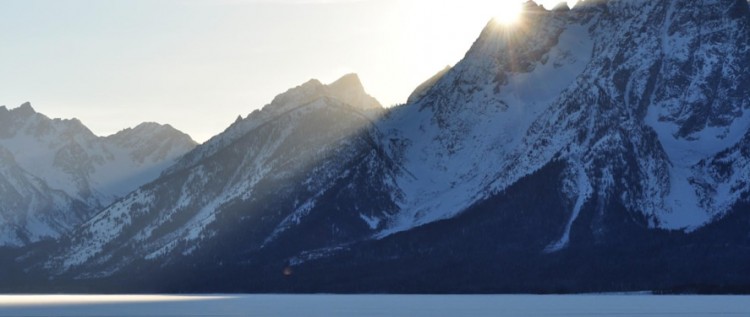

Today, the peaks of the Tetons to the west and Gros Ventre mountains to the east lie blanketed in thick snow. Wildlife are still congregating in the valleys, where, unlike the mountains, the already thin snow cover has begun to melt out. As days lengthen our thoughts here at EcoTour Adventures are beginning to think of spring and the flush of life which follows the melting of snow.
Most animals in the Greater Yellowstone Ecosystem time their reproduction to coincide with the coming spring. Our short summers mean baby animals only have a short window to grow and put on fat reserves to survive the following winter. Each species have different strategies to achieve this goal, read on to learn about some of the ones we see commonly in Grand Teton and Yellowstone National Parks.
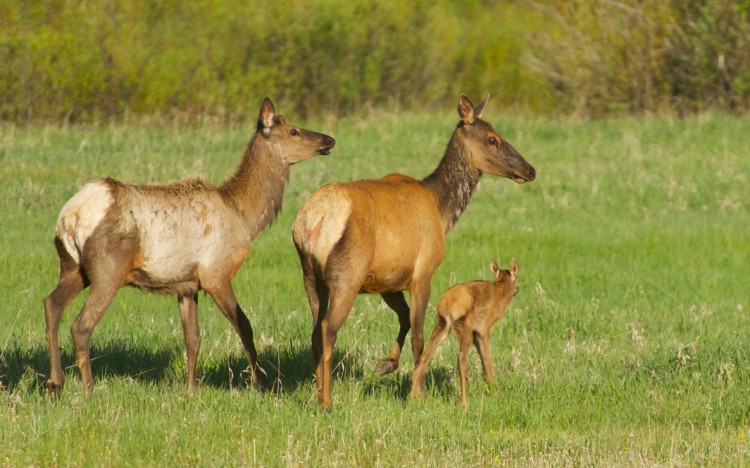
As snow recedes up the mountainsides lush grasses and flowers burst from the soil, after waiting dormant throughout the long winter. The leaves of shrubs and trees, encased in buds, unfurl. Gradually, the greater Yellowstone ecosystem turns from white to green. As snow recedes up the mountainsides, lush grasses and flowers burst from the soil after a long winter dormancy. Gradually, the greater Yellowstone ecosystem turns from a snowy white to vibrant green. Elk and deer migrate back to the mountains, and the females, having all mated around the same time, begin calving. A flush of young animals appear. Wildlife biologists call this phenomenon mating synchrony, and it is a key adaptation which allows these animals to thrive here. The bright green vegetation of spring is at its highest protein and nutrient content of the whole year, a boon to mothers and their nursing young. Mating synchrony also has another purpose however: reducing the number of young consumed by predators.
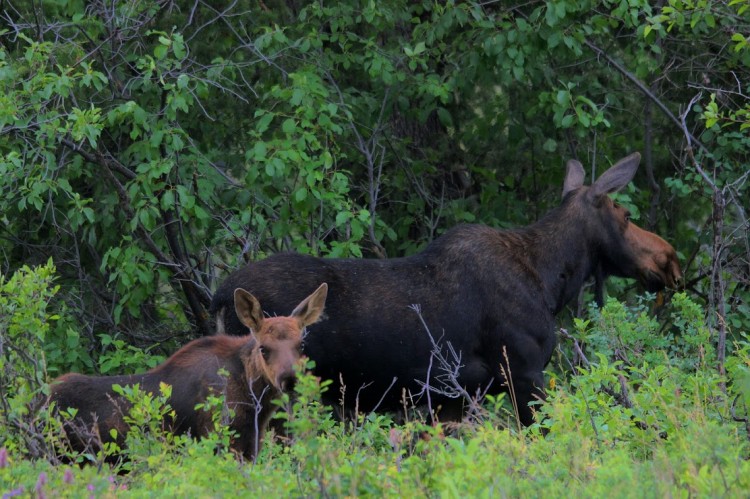
Our hooved animals are not the only ones who are hungry in the spring. Grizzly and black bears awake from hibernation having lost up to 23 % of their muscle mass. Sows, also needing to replenish their own food deficit, emerge with one to three cubs to feed. The synchrony of animal births, especially deer and elk, provides a bounty of food for bears and other predators. In their first few weeks of life elk, deer, moose, and pronghorn are too uncoordinated and slow to escape predators making them an easy food source. However, as they grow, calves soon can out run predators. Synchronizing births limits the overall number of animals that are preyed upon during this vulnerable time period, leading to a higher overall survivorship.
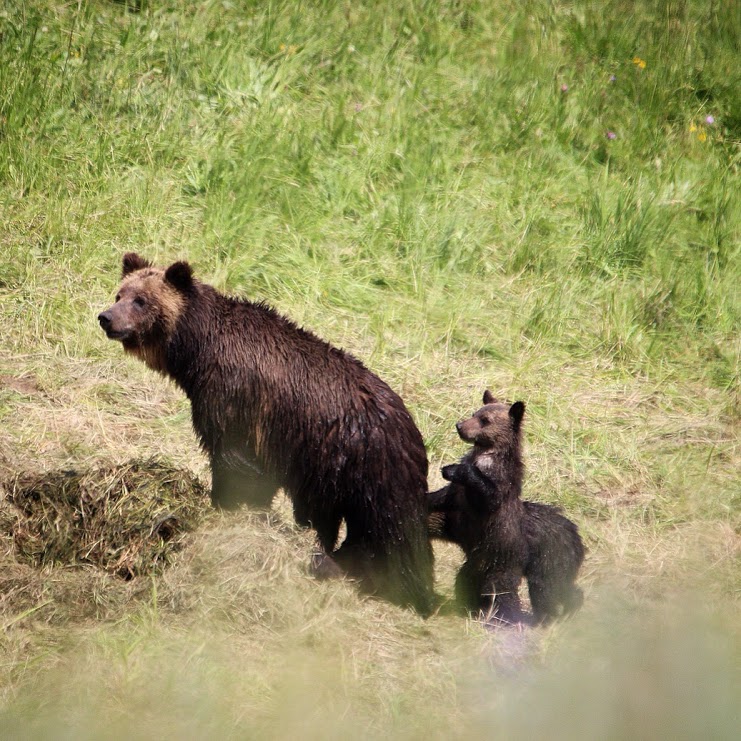
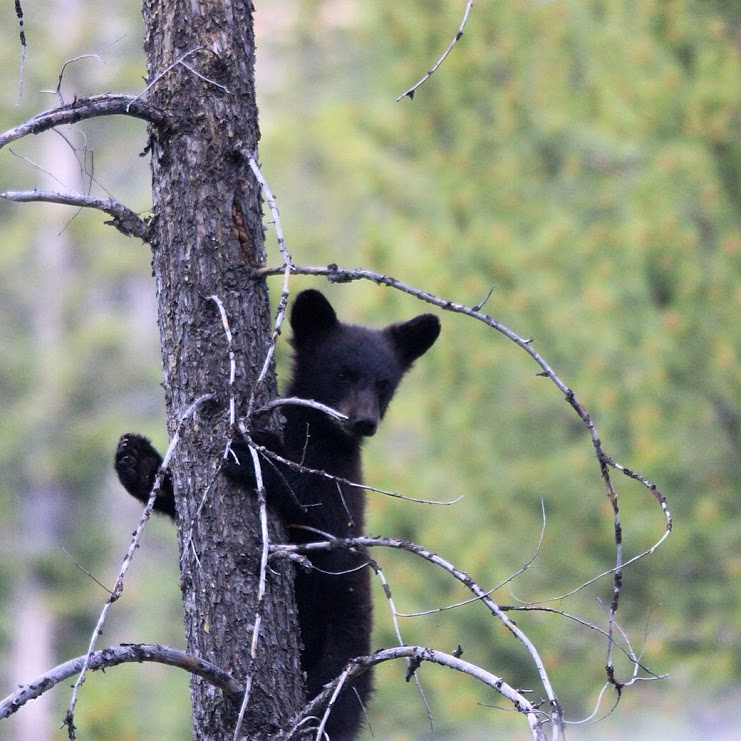
Prey species have a variety of other strategies to reduce the exposure of young animals to predators. Spots on young elk and deer help them blend into the shafts of light cast on to the forest floor by breaking up their profiles. Calves and fawns, including pronghorn and moose, are born scentless and hide themselves away from adults. Mothers will return periodically to nurse the young animals, calling softly for them to emerge from their hiding spots. They also frequently groom their young, removing traces of scent.
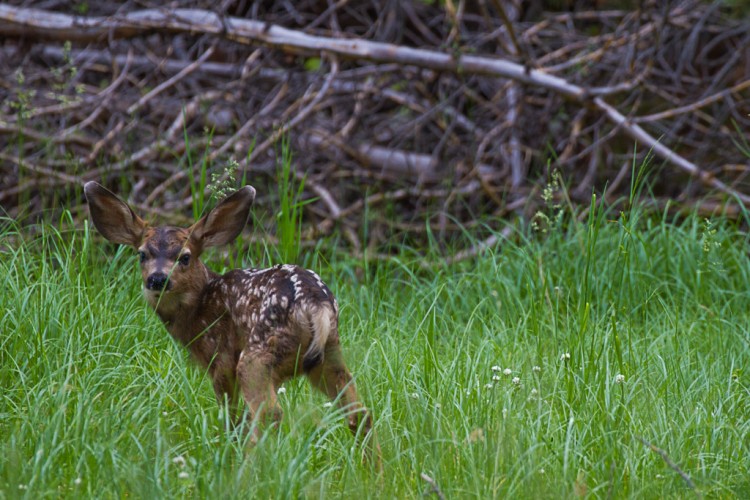
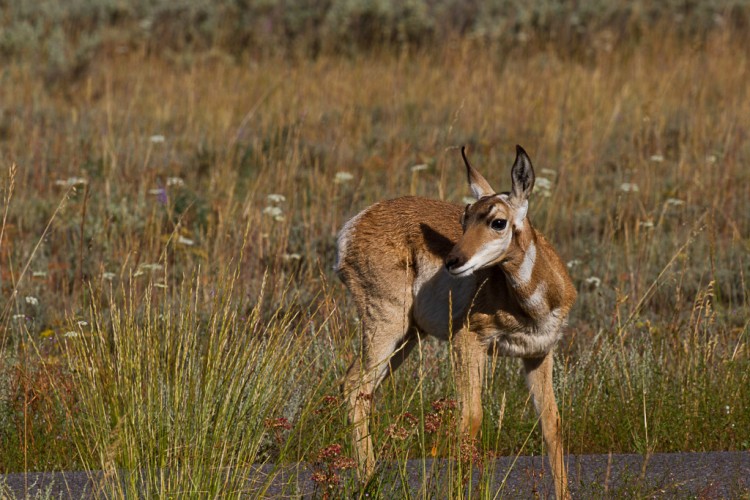
Most herbivores in the Greater Yellowstone rely on hiding and fleeing to avoid predation, but our largest ungulate, the American Bison, will often stand its ground to protect calves. The large conspicuous herds are easily detected, and calves, especially when very young would not be able to outrun a predator. The herd will surround calves if predators approach, the largest adults protecting the edges or trailing behind if the herd decides to run.
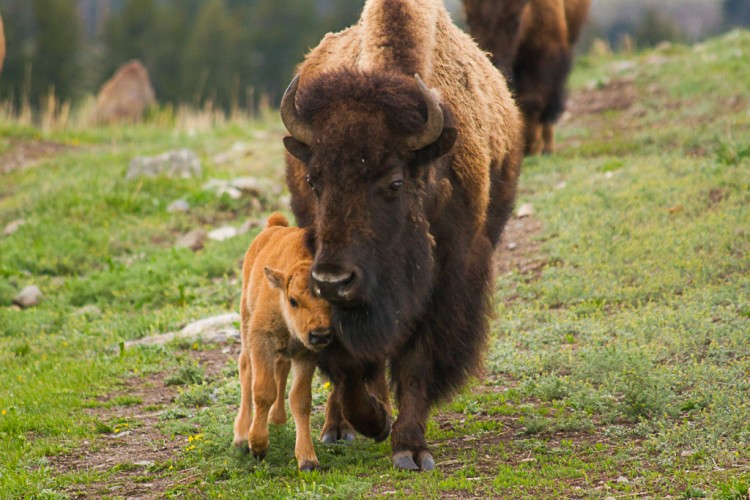
Like mammals, birds in the greater Yellowstone must also maximize our short summers by nesting in spring. Some of our largest birds; eagles, ravens, and great gray owls may be nesting already, needing a much longer duration to successfully raise chicks than other smaller birds. Great gray’s will use abandoned raven or goshawk nests, broken off tree trunks, or other elevated platforms to incubate eggs. Owlets fledge after several weeks in the nest but will remain close by begging for food for up to three months after they can fly. Listen for the “ShhhhhhhhhIP” begging call which is sometimes preceded or followed by the adult “G’waik” Check out this link to the Audubon field guide for a recording and more information.
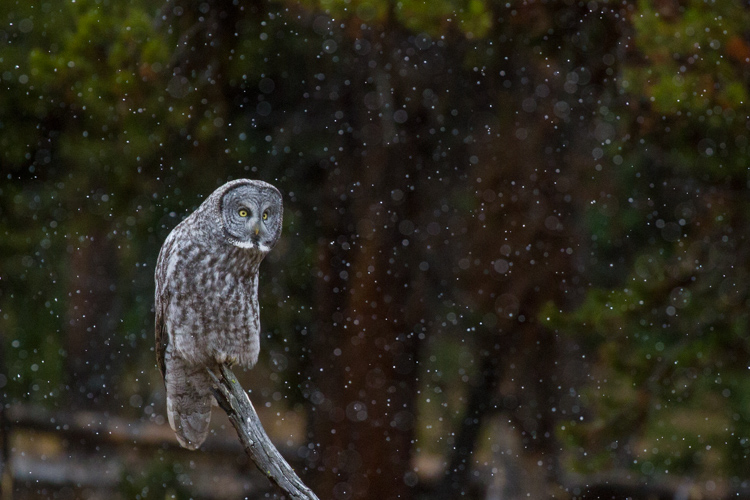
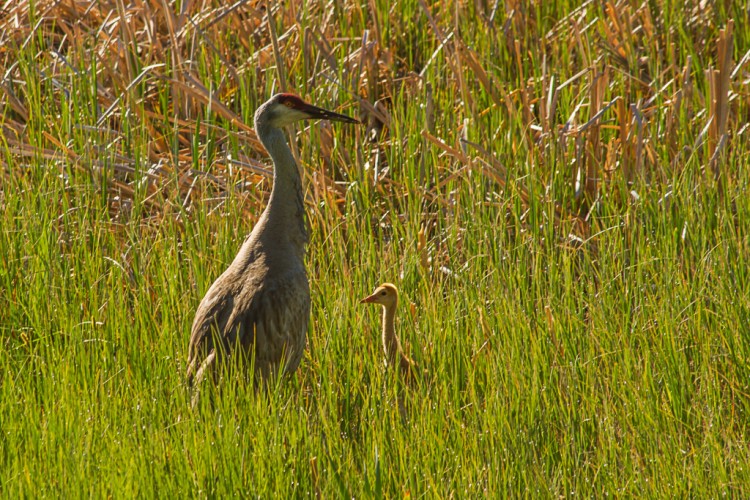
1.jpg)
Many more animals will be having young soon. Songbirds are now beginning their migrations north to Jackson to feast on spring hatches of insects, seeds, plants, and berries. The abundance of food coming in spring and summer provides ample nutrition for their chicks. Small mammals like the uinta ground squirrel, who can hibernate for up to nine months of the year, wake up to feed and reproduce. They in turn provide food for growing fox kits and coyote pups. Though very reclusive, wolf pups may be seen in places like the Lamar Valley of Yellowstone.
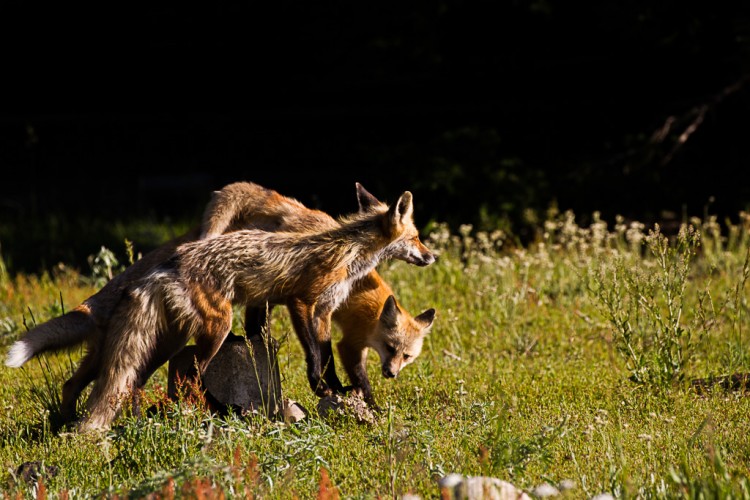
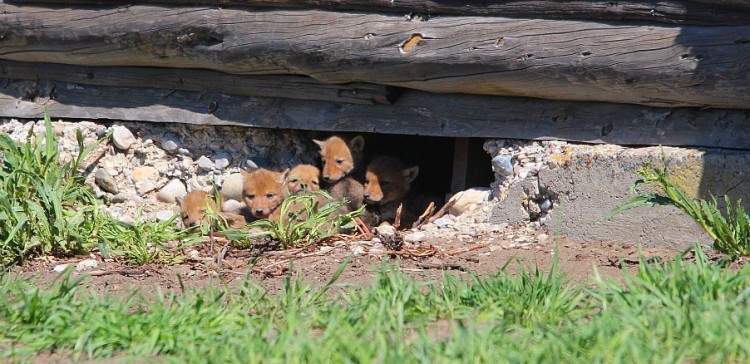
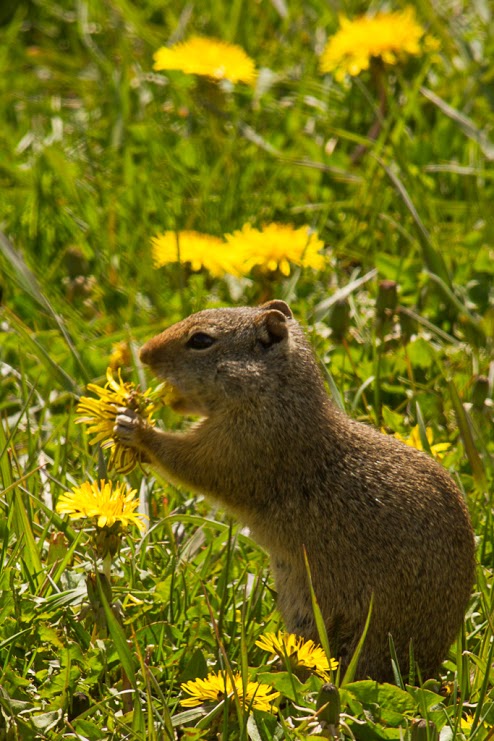
Life floods the Greater Yellowstone in spring, carrying on throughout the summer. Water from melting snows nourishes over 1200 species of plants, who in turn feed an array of insects, birds, mammals and other organisms. It’s one of the most biologically diverse temperate ecosystems on earth, and you can experience it right here in Grand Teton and Yellowstone National Parks. This spring, in addition to welcoming the arrival of our newest animals we are also celebrating the centennial of the National Park Service, created in 1916. Come celebrate with us!
For more information on animals in the Greater Yellowstone look at:
Behavior of North American Mammals Kurt Rinehart and Mark Elbroch
Photos and Writing by Josh Metten
Josh Metten has spent his entire life exploring and living in the Rocky Mountains of Colorado and Wyoming. He is an Ecotour Adventures Naturalist, photographer, conservationist, and outdoor enthusiast. Josh lives in Jackson, WY.
Eco Tour Adventures was created with the idea of helping people connect with the natural world through wildlife observation and natural history interpretation. We believe that when one is more familiar with the intricate workings of the ecosystem, he or she has a deeper appreciation and connection with their environment. With this stronger bond we believe folks will make more environmentally sound choices in their day to day lives. Join us on an adventure today!













